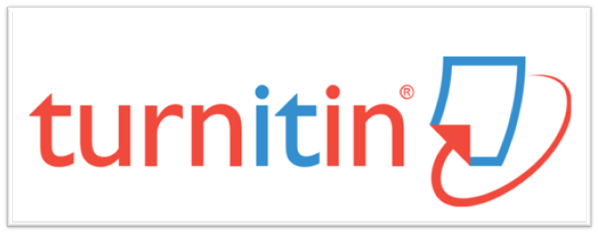KLASIFIKASI UNTUK MEMPREDIKSI TINGKAT KELULUSAN MAHASISWA STMIK WIDURI MENGGUNAKAN ALGORITMA NAÏVE BAYES
DOI:
https://doi.org/10.33884/jif.v12i01.8201Keywords:
Kelulusan mahasiswa, Prediksi , Klasifikasi , Algoritma Naïve BayesAbstract
Student delays in completing their studies are experienced by most higher education institutions, for example at STMIK Widuri. STMIK Widuri must be able to predict student graduation early to prevent graduation that is not on time and maintain a good name and the accreditation assessment that has been obtained. For this reason, this research was conducted to predict the graduation of STMIK Widuri students using the classification method with the Naïve Bayes algorithm. Naïve Bayes is a classification algorithm that uses probability and statistics to predict a class. The dataset used is lecture activities of STMIK Widuri students class of 2021 from 2021-2022 odd to even 2022-2023 academic year and processed using the Rapidminer application. The dataset is processed through the stages of Knowledge Discovery in Database, including selection, pre-processing, transformation, data mining and evaluation stages. From the evaluation results using the confusion matrix on the distribution of training data 50% and data testing 50%, this study resulted in an Accuracy 93,10%, Precision 95,24%, and Recall 90%. In this way, it is hoped that STMIK Widuri can utilize attributes of the data stored in the database to be processed more optimally, for example using existing techniques in data mining.
References
Oon Wira Yuda, Darmawan Tuti, Lim Sheih Yee, and Susanti, “Penerapan Penerapan Data Mining Untuk Klasifikasi Kelulusan Mahasiswa Tepat Waktu Menggunakan Metode Random Forest,” SATIN - Sains dan Teknol. Inf., vol. 8, no. 2, pp. 122–131, Dec. 2022, doi: 10.33372/stn.v8i2.885.
P. Sainanda et al., “Penerapan Data Mining Untuk Memprediksi Kelulusan Mahasiswa Menggunakan Algoritma Naive Bayes Classifier ( Studi Kasus STMIK Primakara ),” Progresif J. Ilm. Komput., vol. 16, no. 1, pp. 47–56, 2020, doi: 10.35889/progresif.v16i1.427.
H. Hartatik, “Optimasi Model Prediksi Kelulusan Mahasiswa Menggunakan Algoritma Naive Bayes,” Indones. J. Appl. Informatics, vol. 5, no. 1, p. 32, Apr. 2021, doi: 10.20961/ijai.v5i1.44379.
N. Khasanah, A. Salim, N. Afni, R. Komarudin, and Y. I. Maulana, “Prediksi Kelulusan Mahasiswa Dengan Metode Naive Bayes,” Technol. J. Ilm., vol. 13, no. 3, p. 207, 2022, doi: 10.31602/tji.v13i3.7312.
S. Widaningsih, “Perbandingan Metode Data Mining Untuk Prediksi Nilai Dan Waktu Kelulusan Mahasiswa Prodi Teknik Informatika Dengan Algoritma C4,5, Naïve Bayes, Knn Dan Svm,” J. Tekno Insentif, vol. 13, no. 1, pp. 16–25, 2019, doi: 10.36787/jti.v13i1.78.
A. Z. M. Sigid Widodo, A. Pandu Kusuma, and W. Dwi Puspitasari, “Analisis Algoritma Naive Bayes Classifier (Nbc) Pada Klasifikasi Tingkat Minat Barang Di Toko Violet Cell,” JATI (Jurnal Mhs. Tek. Inform., vol. 7, no. 1, pp. 87–94, 2023, doi: 10.36040/jati.v7i1.5692.
Heliyanti Susana, “Penerapan Model Klasifikasi Metode Naive Bayes Terhadap Penggunaan Akses Internet,” J. Ris. Sist. Inf. dan Teknol. Inf., vol. 4, no. 1, pp. 1–8, 2022, doi: 10.52005/jursistekni.v4i1.96.
N. Purwati and A. Dwi Januanti, “APLIKASI DATA MINING DENGAN ALGORITMA NAIVE BAYES UNTUK MEMPREDIKSI TINGKAT KELULUSAN MAHASISWA,” J. Pepadun, vol. 2, no. 1, pp. 123–137, Apr. 2021, doi: 10.23960/pepadun.v2i1.38.
H. Hozairi, A. Anwari, and S. Alim, “Implementasi Orange Data Mining Untuk Klasifikasi Kelulusan Mahasiswa Dengan Model K-Nearest Neighbor, Decision Tree Serta Naive Bayes,” Netw. Eng. Res. Oper., vol. 6, no. 2, p. 133, 2021, doi: 10.21107/nero.v6i2.237.
Rovidatul, Y. Yunus, and G. W. Nurcahyo, “Perbandingan algoritma c4.5 dan naive bayes dalam prediksi kelulusan mahasiswa,” J. CoSciTech (Computer Sci. Inf. Technol., vol. 4, no. 1, pp. 193–199, Apr. 2023, doi: 10.37859/coscitech.v4i1.4755.
F. Solikhah, M. Febianah, A. L. Kamil, W. A. Arifin, and Shelly Janu Setyaning Tyas, “Analisis Perbandingan Algoritma Naive Bayes Dan C.45 Dalam Klasifikasi Data Mining Untuk Memprediksi Kelulusan,” TEMATIK, vol. 8, no. 1, pp. 96–103, Jun. 2021, doi: 10.38204/tematik.v8i1.576.
S. Wahyuni and Adinda, “PENERAPAN ALGORITMA NAÏVE BAYES PADA PREDIKSI KELULUSAN MAHASISWA (STUDI KASUS: INSTITUT MEDIKA Drg. SUHERMAN),” J. Inform. SIMANTIK, vol. 6, no. 2, pp. 29–34, 2021.
Tumini and L. Damayanti, “Aplikasi Data Mining Untuk Memprediksi Kelulusan Siswa Dengan Metode Naïve Bayes Studi Kasus Smp Negeri 11 Kotabumi Utara,” Inform. SIMANTIK, vol. 3, no. 2, pp. 23–30, 2018.
A. Mahanggara and A. D. Laksito, “Prediksi Pengunduran Diri Mahasiswa Universitas Amikom Yogyakarta Menggunakan Metode Naive Bayes,” Simetris J. Tek. Mesin, Elektro dan Ilmu Komput., vol. 10, no. 1, pp. 273–280, 2019, doi: 10.24176/simet.v10i1.2967.
I. W. Saputro and B. W. Sari, “Uji Performa Algoritma Naïve Bayes untuk Prediksi Masa Studi Mahasiswa,” Creat. Inf. Technol. J., vol. 6, no. 1, p. 1, 2020, doi: 10.24076/citec.2019v6i1.178.
G. A. Pradnyana and K. Agustini, “Konsep Dasar Data Mining,” vol. 1, 2018, pp. 1–47.
E. Etriyanti, D. Syamsuar, and N. Kunang, “Implementasi Data Mining Menggunakan Algoritme Naive Bayes Classifier dan C4.5 untuk Memprediksi Kelulusan Mahasiswa,” Telematika, vol. 13, no. 1, pp. 56–67, 2020, doi: 10.35671/telematika.v13i1.881.
A. Khaerunnisa, “Analisis Tingkat Kelulusan Mahasiswa di Unisba dengan menggunakan Algoritma K-Means Clustering,” J. Ris. Mat., pp. 67–76, 2022, doi: 10.29313/jrm.v2i1.1018.
S. Alam, M. G. Resmi, and N. Masripah, “Classification of Covid-19 vaccine data screening with Naive Bayes algorithm using Knowledge Discovery in database method,” J. Comput. Networks, Archit. High Perform. Comput., vol. 4, no. 2, pp. 177–185, 2022, doi: 10.47709/cnahpc.v4i2.1584.
F. Sulianta, Basic Data Mining from A to Z. 2023.
Downloads
Published
How to Cite
Issue
Section
License
Copyright (c) 2024 JURNAL ILMIAH INFORMATIKA

This work is licensed under a Creative Commons Attribution 4.0 International License.






















